VOODOO/
HOODOO
DISCOVER NEW ORLEANS VOODOO + HOODOO
• • •
Voodoo is a religion,
a philosophy and a way of life for millions.
Voodoo & Hoodoo are words that conjure feelings of fear, curiosity and confusion. Visuals of Black Magic, Zombies and Orgies dance in your head! Fears of dark Voodoo dolls, selling your soul to the Devil, and evil curses are blamed their way.
Yet true Voodoo & Hoodoo is none of that. Voodoo is the religiom, Hoodooi is the prictice, Voodoo is high magic and ceremonial and Hoodoo is low magic or folk magic. For years many thought hoodoo was bad and Voodoo good or of course other big religions, say both are evil For way Too long have we been told what is good and what is evil, so people now prefer to search for their own truth.
Voodoo reality is amiss when preached only though the Hollywood pulpit, movies like I Walked With a Zombie, Serpent & the Rainbow, Angel Heart, Skeleton Key, the James Bond film Live & Let Die, or even Disney’s The Princess & the Frog. One of the big back steps was within American Horror story: Coven. This AHS season from New Olreans- all fiction! These films show sinister underworld outlooks reinforcing fear. This is entertaining fiction containing a few historical facts sprinkled on top for credibility, but it ends up doing harm to Voodoo’s image.
It seems that Voodoo and Witchcraft or Wicca are the religions that are primarily experienced through the eye of a camera lens.
Many find Voodoo when help is needed in a life situation – this is one of the definitions of crisis Voodoo. Love and money are the main reasons that outsiders seek the spiritual services consult of Voodoo or Hoodoo.
Buzzfeed Unsolved Explores The World of Voodoo and Interview the Voodoo Priestess Bloody Mary in New Orleans.
While exploring her haunted former voodoo temple, Bloody Mary performs a ritual to invite spirits to communicate with Shane and Ryan. They offer food, coins, and call upon the spirits to communicate with them.
A follow-up Questions & Answers video was also produced by Buzzfeed Unsolved, answering questions about the Voodoo spotlight episode.
MORE ABOUT VOODOO + HOODOO
• • •
DO YOU BELIEVE IN VOODOO?
“That question to me is as silly as saying, ‘Do you believe in Catholicism, Judaism or any accepted ism.’ It is indeed a faith system, and some say it’s the oldest in existence. One does not have to be a member to know of a system and believe its existence. ‘Voodoo’ comes from the Fon language, the word Vodun translates to mean "God" or spirit forces. So is the question, ‘Do you believe in God?’ In which, case the answer is ‘yes,’ again."
-Bloody Mary
Is Voodoo Devil Worship or Black Magic?
Is Voodoo Devil Worship?
The devil defined: a culmination of evil personified, prescribed by the dogma of the Christian faith, strengthened by the fears of fundamentalists without their knowledge, but with their consent. A devolution from the Judaic tester; their district attorney, scapegoat for life’s tests and trials. Many often forget that the devil is an aspect of God, who exists because of and with the permission of God. The uninformed often use the term “devil worship” as an excuse to put down any tradition but their own. Voodoo has no spirit of incarnate evil, but both aspects good and evil (hot and cool, right and left. Polarized opposites exist in all spirits and people). We need to achieve the balance.
Is Voodoo Black Magic?
Not in the mainstream sense, for that would include the Devil again. Yes, there is magic; the bending of energy, shamanistic techniques, physics-related and even witch-like practices are used. Voodoo is for protection and the betterment of mankind. However, there are people that will use it for their own gain. Perhaps at the expense of others. This is something apparent throughout the history of man and all religions. People are flawed not the philosophies of these religions themselves.
Are New Orleans Voodoo and Haitian Voodoo the same thing?
No, and Haitian Voodoo and New Orleans Voodoo are not the same as African Voodoo either. Voodoo is a religion of African origin brought to Latin Catholic areas with the slave trade. New Orleans Voodoo is one of many resulting diaspora traditions which developed differently as to the specific needs in the area it landed. The African slave trade came directly to North America viaLouisiana —not by way of Haiti, which is mistakenly claimed, Though slaves were taken from the same areas or tribes in Africa. The long trip was made here directly as to avoid pirating of the slaves. Those slaves who survived managed to bring their spirits (voodoos, Loas or mysteries) and beliefs safely ashore. Both New Orleans and Haiti were under French rule but had a totally different attitudes towards slavery. New Orleans allowed Voodoo to take root here earlier and more openly due to the slave autonomy that existed in Louisiana that did not exist in Sainte Domingue until after the revolution of 1797. Haitian refugees fleeing the revolution, both black and white poured into New Orleans after 1804—some had been disallowed under Spanish and French rule. Even with the latter acceptance of Haitian planters and their slaves by the new Americans, their immigration was a cautious and fearful one
When Louisiana fell under new American rule tens of thousands of people poured into this port town from all over the country. New Orleans was on its way to becoming the richest town in the country creating an ever-increasing need for the skills of voodoo. The demand arose out of both need and fear. The Haitian migration made Voodoo more newsworthy than the everyday practice that was a part of Creole life. The new Americans wrote and covered this curious and feared practice. With a series of ritual coverage and voodoo reports, to the untrained eye it looked like a new phenomenon. Haitian Voodoo then mixed her magic into the Creole traditions but La Grande Zombi (BiKongo great ancestral God) prevailed as the Great God through the 19th century Voodoo heyday. The Congo square voodoo rituals grew in number and popularity to become the first tourist spot in the South. Due to the increasing popularity of the worship and the fear of revolution in our own land the new American government found it necessary to make a law permitting these gatherings and limiting their duration, the rituals had continuously been going on here already since the 1730’s. At first glance it appears historically like the Americans were being benevolent by legalizing such things in 1817, when it was put into law only so it could be controlled. This was the only free meeting place for the slaves to gather in the western hemisphere on their day off on Sunday. The law added the stipulation that it had to be supervised. Supervision had never needed for the past 77 years. Eventually the Americans outlawed the gatherings all together by flickering on and off the right of assembly. This, of course, simply spread Voodoo more overtly into other areas of town, deeper into the swamp and more quietly crammed into closets, Voodoo became more clandestine after the Civil War.
Records from the beginning of Louisiana show Voodoo as a contributing factor of Creole (native born) survival especially from its healing knowledge. With a high death toll and difficult travel, a form of inter-dependency grew. Plantation Voodoo provided healing and magical assistance for many. Creole Voodoo was experienced and shared multi-culturally from the beginning of the slave trade in Louisiana. By the time of the Great Marie Laveau, 1820’s to the 1870’s, Voodoo was associated with the name New Orleans the world over. Voodoo was also explored in some cases as negative, noted in cases from the earliest of Superior Council and the Cabildo government records. The infamous “gris-gris case” which concluded that the government would not acknowledge magical powers but could opt to prosecute poisoners. Though, this seems to be a borrowed Haitian tale rather than a New Orleans one. Voodoo here was blended into life, fearing it only occasionally. Magic mingled, traditions blended and became a part of everyday life.
How is Voodoo different in New Orleans?
New Orleans has its own tradition, forgotten by most. It is encoded in our culture through customs, cuisine, music and lore. Within the soul of all religion’s evolution is inevitable: they adapt and, one would hope, progress. Creole Voodoo is her own breed. It is so ingrained into our culture here that many are unaware that they all do Voodoo in the everyday New Orleans things they do.
The Queen was the spiritual leader; Voodoo here is very matriarchal and very multicultural. These are a part of the uniqueness of New Orleans. New Orleans is an open book, a place where people feel safe to explore their occult or hidden side in the open. They are free to ask questions, drink, dance, tour, explore and attend rituals; things they may never think of doing at home. Many think they are doing these things just for fun, but, in actuality, there is no such thing as an observer. When you watch, a pact is made, and you are an observer/participant. This cause and effect have created an energy, a spirit, that has kept Voodoo alive since the days of Congo Square. This seemingly commercial aspect of Creole Voodoo that is so put down by outsiders is part of the Spirit of Place as well as her greatest ally and teacher. It is what keeps Voodoo alive!
New Orleans is still a port town at heart. There is a special tradition lurking under the surface that is closer to the concept of a family tradition. Voodoo came with the slave trade in the 18th century, directly from Africa. Dahomey and Congo traditions survived; culture, religion and customs adapted and depended on the social environment and spirit of the place in which they transfer. The Africans by nature were survivors. They embraced many magicks, those born here and brought here later. All these things determine the spirits called upon and how things take root. New Orleans was the perfect breeding ground to host a tradition that has earned her the reputation of Voodoo Capital of America.
What is the truth about Voodoo dolls?
Every culture has a doll in their closet. A doll is a focusing and meditation device that can be personalized for sympathetic healing. Harming is what you hear about the via Hollywood (who dubbed them “Voodoo dolls” to begin with). Bloody Mary teaches proper focusing and charging in workshops around the country and here in New Orleans, for positive uses only. Historic multicultural techniques are explored and utilized. They are surrogates and houses for spirits, when animated correctly.
What is Hoodoo?
The word Hoodoo is a derivative/slang of the word and religion of Voodoo, used locally. Hoodoo is the folk magic component surrounding the religion without most of the ceremonial aspects of Voodoo. At this split in the early 20th century from Voodoo to Hoodoo, many old school New Orleans Voodoo Queens were against it for its lack of spirit involvement and thought that many had a hand in it just for money. They called them two-headed or left-handed folk. From 1930’s – 1950’s Hoodoo was thought more of as the “dark side,” spell casting for personal gain only. It was even feared locally where voodoo was thought of with less fear then the rest of the country (but of course still unholy). In the 1960’s and 1970’s Voodoo and Hoodoo began to be utilized in a more civil manner, dropping much of the prejudice that had plagued it earlier in the century. The civil rights movement helped shed the light upon and stir interest in Voodoo as part of “world religions.” New Orleans cultural nuances such as jazz, blues, creole cuisine and Mardi Gras Indians were now, once again, joined by Voodoo. It was no longer just a curiosity but an important part of the behind the scenes lifestyle and cultural anomaly in North America. Voodoo had risen but is stumbling again at present. Greed is one of the big demons and so is jealousy. Both of these demons are far too present in the modern New Orleans Voodoo ether. Newcomers do not lay the groundwork necessary for respectful priest and priestess to develop. Many spread unnecessary hate and throw curses with little reason. This religion is not for everyone.
Modern Hoodoos are trying to put the ritual back into the hoodoo or vice-versa in other areas of the country. Northern Louisiana near Mississippi and Tennessee and occasionally near Texas it is referred to as Conjure. The word conjure was spoken of occasionally as Conjo in Nola.
A MESSAGE FROM BLOODY MARY:
Holding traditions of New Orleans Voodoo and Haitian Vodou, I am a teacher and healer from the source through which all religions, philosophies and sciences flow. Many believe that all life stemmed from Africa, and through the journeys of the first peoples, all religions have passed through and remained forever embedded within the stream. Somehow throughout history this religion has survived, as we as a people have survived. Voodoo, rather than denying new concepts other religions proposed, choose to incorporate them into their religion. A valuable lesson of tolerance and survival can be seen here.
“The history of Voodoo I hold, yet the mysteries which are true gold. Magic, miracles and mysticism are not a cumulative aggregation to horde for ego sake, but a gift with trap doors to responsibly embrace. The essence in itself is pure but for a priestess and queen, all in all, is a heavy job to endure. Be ready for the responsibilities that come with your power, beware the power does not corrupt!” The Queens (channeled through Bloody Mary).
Having said that, I must add that fear holds you back. The true power is all around you as you see with more than your eyes-embrace it and teach.
Betwixt and between is my hometown’s crossroads ley. There is much work here still to be done and my path is to facilitate and process, perchance to orchestrate that flow. With all the workers attached to this sight, I solicit your prayer, energy and physical presence to help this plight. Indeed, you may say-this is just the city of New Orleans, but she is a wounded microcosm from where there is so much more. Your connection is accepted, appreciated, and amalgamated.
There are as many varieties of Voodoo as there are of Christianity, and they are all, right in their theory. New Orleans Voodoo is her own tradition, as is Haitian voodoo, Dominican Vudu: las 21 divisions, Brazilian Candomble, Palo, Trinidad Orisha, Santeria, Obeah and of course the Mother – African Voodoo. Hoodoo is the folk magic practice in New Orleans and parts of gulf coast These loose practices of folk magic varied regionally and in other areas was known as root work, or conjure. Our hoodoo was a mixed tradtion of practices to assist the worker in thier personal survival needs used by all in need with Native American, European and African trad that all blended in New Orleans. The word Hoodoo is recently reclaimed as the name of a unified African diasporic religion in USA.
SUBMIT
E-mail:
*
Dark Greetings and Many Thanks!
SIGN-UP FOR NEWS & EVENTS!
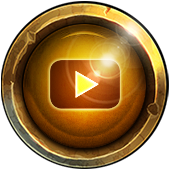
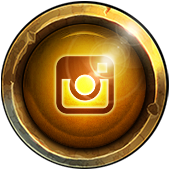
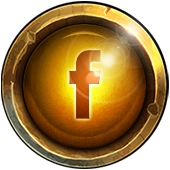
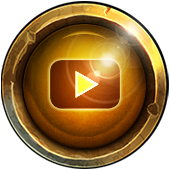
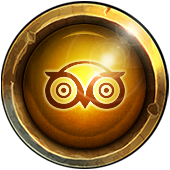
Bloody Mary's Tours, Haunted Museum,
Voodoo Shop & Psychic Spa & Paranormal center
826 & 828 N. Rampart St NOLA
@BloodyMary NOLA @HauntedmuseumNOLA Subscribe YouTube @bloodymaryneworleans
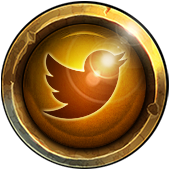

Privacy Policy | All Rights Reserved | Shipping Policy | Refund Policy
Copyright 2005- 2024 Bloody Mary's Tours, Haunted Museum & Voodoo Shop








